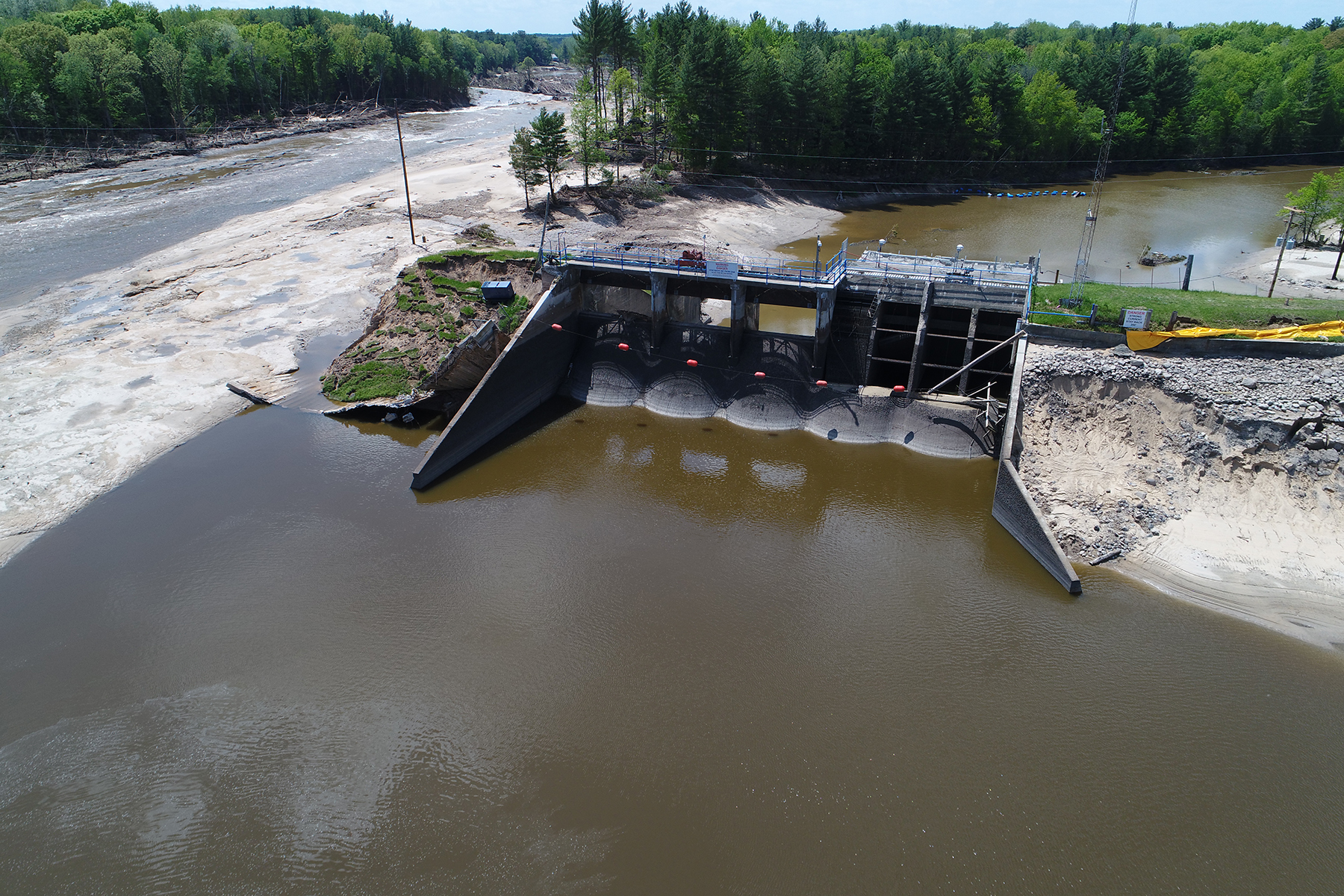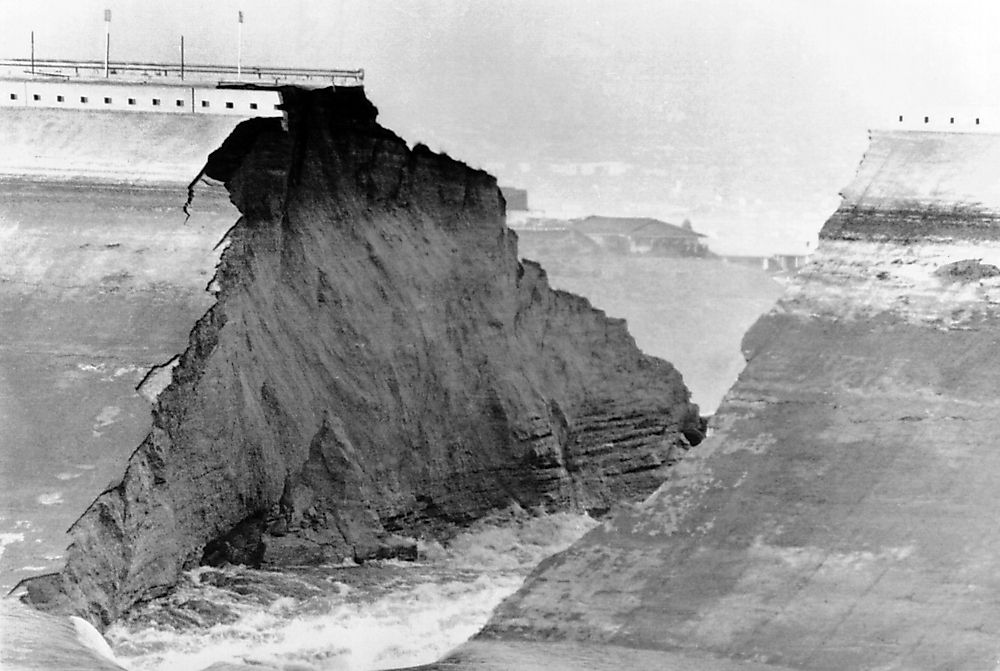Causes of Dam Failures

Dam failures, often leading to catastrophic consequences, can stem from a complex interplay of geological, structural, and operational factors. Understanding these causes is crucial for designing and managing dams to minimize risks and ensure public safety.
Dam failures, like cracks in the fabric of our safety, can unleash a torrent of destruction. In Blue Earth County , the threat of dam failure looms large, reminding us of the fragility of our infrastructure. The consequences of a dam breach could be catastrophic, leaving behind a trail of devastation that would take years to heal.
Geological Factors
Geological factors play a significant role in dam failures. Inadequate site investigations can overlook geological hazards such as:
- Unstable foundations: Weak or fractured rock formations, soil liquefaction, or excessive groundwater seepage can compromise the dam’s stability.
- Seismic activity: Earthquakes can trigger landslides, ground shaking, and liquefaction, leading to dam failures.
- Erosion and weathering: Natural processes can weaken dam structures over time, particularly in areas with heavy rainfall or flooding.
Example: The Vaiont Dam disaster in Italy (1963) was caused by a massive landslide that triggered a catastrophic flood, killing over 2,000 people. The landslide was triggered by heavy rainfall and unstable geological conditions.
The catastrophic consequences of dam failure can be devastating, leaving behind a trail of destruction and loss. The Rapidan Dam in Mankato, Minnesota stands as a poignant reminder of such an event, where a sudden breach unleashed a torrent of water, transforming the landscape and forever etching its mark on the community.
The lessons learned from this tragedy serve as a sobering reminder of the importance of dam safety and the need for constant vigilance to prevent such disasters from recurring.
Structural Factors
Structural deficiencies in dam design or construction can also contribute to failures. These include:
- Design flaws: Inadequate structural analysis or design errors can lead to weaknesses in the dam’s structure.
- Construction defects: Poor construction practices, such as using substandard materials or improper installation, can compromise the dam’s integrity.
- Deterioration and aging: Dams can deteriorate over time due to corrosion, fatigue, or other environmental factors, increasing the risk of failure.
Example: The Banqiao Dam collapse in China (1975) was caused by structural failure due to design flaws and poor construction practices. The dam collapsed during heavy rainfall, leading to the deaths of over 26,000 people.
The catastrophic consequences of dam failure reverberate far beyond the immediate vicinity, leaving a trail of devastation and human suffering. In the annals of such tragedies, the dam failure in Minnesota stands as a poignant reminder of the fragility of these structures.
The Minnesota dam failure offers a sobering glimpse into the catastrophic chain of events that can unfold when a dam succumbs to the relentless forces of nature, highlighting the urgent need for vigilant monitoring and proactive maintenance to safeguard both lives and infrastructure.
Operational Factors
Improper operation or maintenance of dams can also contribute to failures. These include:
- Overtopping: Exceeding the dam’s designed capacity during floods can lead to overtopping and catastrophic failure.
- Insufficient spillway capacity: Inadequate spillways to release excess water can lead to overtopping and dam failure.
- Neglect and lack of maintenance: Regular inspection and maintenance are essential to identify and address potential problems, but neglect can increase the risk of failure.
Example: The Teton Dam failure in the United States (1976) was caused by operational errors and insufficient spillway capacity. The dam collapsed during a flood, leading to the deaths of 11 people.
Importance of Proper Design, Construction, and Maintenance
To prevent dam failures, it is crucial to prioritize proper design, construction, and maintenance. This involves:
- Thorough site investigations: Identifying geological hazards and assessing the suitability of the site for dam construction.
- Sound engineering design: Ensuring the dam’s structural integrity and stability under various loading conditions.
- Rigorous construction practices: Adhering to strict quality control measures and using high-quality materials.
- Regular inspection and maintenance: Monitoring dam performance, identifying potential problems, and implementing timely repairs.
By following these principles, we can significantly reduce the risk of dam failures and ensure the safety of communities downstream.
Consequences of Dam Failures
The failure of a dam can have catastrophic consequences, ranging from loss of life and property damage to severe environmental impacts. Throughout history, dam failures have caused immense devastation, leaving behind a trail of tragedy and destruction.
Loss of Life
One of the most immediate and devastating consequences of dam failures is the loss of human life. When a dam collapses, the sudden release of water can create a powerful surge that can sweep away everything in its path. People living downstream, often unaware of the impending danger, can be caught off guard and swept away by the torrent. In some cases, entire communities have been wiped out by dam failures, resulting in hundreds or even thousands of fatalities.
Property Damage
Dam failures can also cause extensive property damage. The flooding caused by a dam collapse can destroy homes, businesses, infrastructure, and agricultural land. The economic impact of dam failures can be enormous, as the destruction of property and infrastructure can disrupt livelihoods and cripple local economies.
Environmental Impacts
In addition to the loss of life and property, dam failures can also have severe environmental consequences. The sudden release of water can alter river ecosystems, disrupt fish populations, and destroy wildlife habitats. Dam failures can also release pollutants and sediments into the environment, contaminating water sources and harming aquatic life.
Case Studies of Major Dam Failures
Throughout history, there have been numerous dam failures that have had devastating consequences. Some of the most notable examples include:
- The 1959 Malpasset Dam failure in France, which killed over 400 people and destroyed the town of Fréjus.
- The 1963 Vajont Dam disaster in Italy, which killed over 2,000 people and destroyed several villages.
- The 1975 Banqiao Dam failure in China, which killed an estimated 171,000 people and displaced millions more.
Importance of Emergency Preparedness and Response Plans
Given the potential consequences of dam failures, it is crucial to have emergency preparedness and response plans in place. These plans should Artikel the steps that need to be taken in the event of a dam failure, including evacuation procedures, warning systems, and emergency response measures. Regular drills and exercises can help to ensure that these plans are effective and that communities are prepared to respond quickly and efficiently to a dam failure.
Mitigation and Prevention of Dam Failures

Ensuring dam safety is paramount, and several measures can be implemented to mitigate and prevent catastrophic failures. These include comprehensive monitoring systems, rigorous inspections, and proactive risk assessments.
Early Warning Systems
Early warning systems play a vital role in mitigating dam failures. These systems monitor dam behavior and environmental conditions, providing real-time data on potential risks. Sensors detect changes in water levels, seepage, and structural integrity, triggering alerts when predefined thresholds are exceeded.
Dam Safety Inspections
Regular dam safety inspections are crucial for identifying potential hazards and ensuring structural integrity. Inspections involve thorough examinations of the dam’s structure, foundation, and surrounding environment. Engineers assess the condition of the dam, identify any signs of distress, and recommend necessary maintenance or repairs.
Risk Assessments, Dam failure
Risk assessments evaluate the likelihood and potential consequences of dam failures. These assessments consider factors such as dam design, construction quality, geological conditions, and potential hazards like earthquakes and floods. The results guide decisions on dam safety measures, including upgrades, maintenance schedules, and emergency action plans.
Government Regulations and Industry Best Practices
Government regulations and industry best practices play a significant role in ensuring dam safety. Regulations establish minimum standards for dam design, construction, and operation. Industry best practices provide additional guidelines and recommendations to enhance dam safety.
Successful Dam Safety Programs
Numerous successful dam safety programs have been implemented worldwide, demonstrating the effectiveness of proactive measures in reducing the risk of dam failures.
- The United States Dam Safety Program: This comprehensive program has significantly reduced the number of dam failures in the United States through regular inspections, risk assessments, and strict regulations.
- The Swiss Dam Safety Program: Switzerland’s rigorous dam safety program includes advanced monitoring systems, regular inspections, and a strong focus on risk management, resulting in an excellent safety record.
The cascading torrent of a dam failure, a cataclysmic force, can transform landscapes in an instant. In Blue Earth, Minnesota , the remnants of a breached dam stand as a testament to the devastating power of water. Its crumbled walls, now a stark reminder of the fragility of human constructions, underscore the urgent need to address the aging infrastructure of dams across the country, lest we risk further tragedies.
The catastrophic consequences of dam failures, from flooding to infrastructure damage, can be devastating. However, innovative approaches like the Blue Earth Mn project demonstrate the importance of proactive measures. This innovative dam design reduces the risk of catastrophic failure by incorporating controlled flooding mechanisms, showcasing the crucial role of engineering in safeguarding our communities from potential disasters.